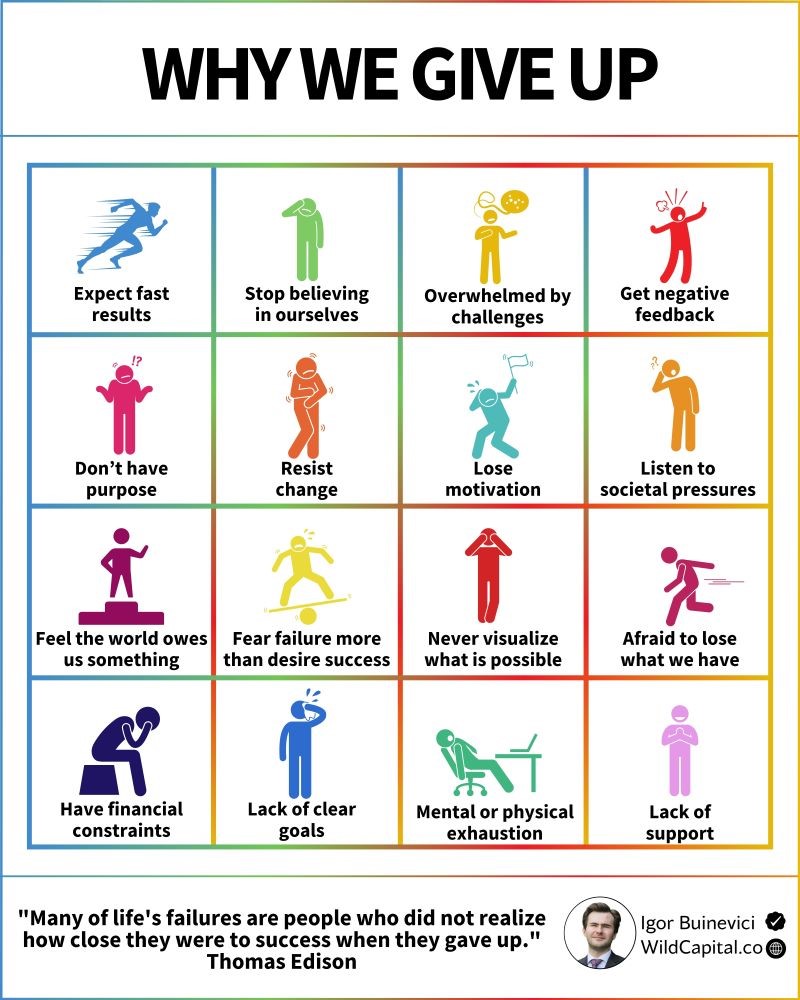4. Commit to Continuous Learning and Communication Development
Imagine someone who mastered professional communication decades ago but never adapted. Today, their overly formal emails, unfamiliarity with new technology, or outdated communication style would clearly hinder their effectiveness. Communication isn’t static—it’s constantly evolving. Continuous learning is critical to remaining effective, influential, and successful.
Here’s your practical guide to integrating continuous learning into your communication practices—helping you remain agile, relevant, and future-ready.
Why Continuous Learning in Communication Matters
Communication norms, technologies, and expectations evolve quickly. Regularly updating your communication skills ensures you:
- Stay relevant and effective across changing contexts.
- Quickly adopt new tools and methods.
- Remain influential and respected by colleagues.
- Avoid skill stagnation or professional obsolescence.
🔍Reflection Point
Only 8% of people achieve their goals. What communication habits can help you stay in that 8%?
Write one SMART goal for your communication development this semester. Break it into three actionable steps and identify one accountability partner.

Practical Strategies for Continuous Communication Learning
Strategy 1: Cultivate Curiosity and Stay Informed
Continuous learning begins with curiosity. Actively seek information about emerging trends, technologies, and communication best practices.
Practical tips:
- Regularly read articles, blogs, or books on communication trends.
- Follow communication thought leaders on LinkedIn, Twitter, or professional networks.
- Subscribe to industry newsletters or listen to relevant podcasts.
Real-world example:
Spend 10–15 minutes weekly reading industry articles or blogs to remain updated on communication best practices and emerging trends.
Strategy 2: Engage Regularly in Skill Development
Invest in structured learning opportunities—online courses, webinars, workshops—to refine specific communication skills.
Practical tips:
- Identify specific areas for improvement (e.g., public speaking, persuasive writing, emotional intelligence).
- Enroll in online courses or workshops targeting these skills.
- Immediately apply and practice what you’ve learned in professional situations.
Real-world example:
If you want to enhance your presentation skills, join a short online course or public-speaking workshop, then apply new techniques in your next presentation.
Strategy 3: Consistently Seek and Implement Feedback

Feedback provides valuable insights into how your communication is perceived by others. Regularly seek constructive feedback from colleagues or mentors.
Practical tips:
- Request specific feedback from trusted peers (“How effective was my message delivery?”).
- Reflect regularly on your communication style and identify areas for improvement.
- Integrate feedback directly into your future interactions and practice.
Real-world example:
After a major presentation, ask colleagues directly: “What aspects were clear and compelling? What could be improved?” Use their insights to adjust future presentations.
Strategy 4: Leverage Emerging Technologies and AI Tools
Actively engage with new communication technologies, including AI-based writing and presenting tools, to stay relevant and efficient.
Practical tips:
- Experiment regularly with AI-powered writing assistants (like Grammarly or ChatGPT).
- Familiarize yourself with new platforms and communication software as they emerge.
- Regularly integrate and evaluate new tools to improve productivity and effectiveness.
Real-world example:
Use an AI writing assistant to draft emails or reports, improving clarity and efficiency, while maintaining your authentic voice.
Strategy 5: Participate in Mentoring and Collaborative Networks
Learning from others accelerates growth. Engage in mentoring, coaching, or professional networks to improve communication skills collaboratively.
Practical tips:
- Seek experienced mentors or coaches to guide your communication development.
- Collaborate frequently with diverse colleagues to learn varied communication styles.
- Join professional groups or communities focused on communication practice and peer learning.
Real-world example:
Become an active participant in communication-focused professional groups or LinkedIn communities, learning new techniques and sharing best practices regularly.
Strategy 6: Regularly Assess and Adjust Your Communication Approach
Periodic self-assessment ensures you stay adaptable and relevant as norms evolve.
Practical tips:
- Schedule quarterly or biannual reviews of your communication skills and progress.
- Identify growth opportunities and adjust your personal communication goals accordingly.
- Regularly reflect on what’s working well and what needs further development.
Real-world example:
Every quarter, set aside dedicated time to evaluate your communication effectiveness, adjusting your goals and development plan accordingly.
🤖 Try this Prompt
Try this prompt: ‘Act as a productivity coach. Help me design a daily routine that balances work, learning, and rest.’ Reflect on how AI can support your communication and life design.
Quick Checklist: Continuous Communication Development
Before your next professional interaction, confirm quickly:
✅ Am I actively staying informed about new communication trends and tools?
✅ Have I invested in skill development recently?
✅ Did I request and incorporate recent feedback on my communication?
✅ Am I effectively leveraging new communication technologies?
✅ Have I engaged in mentorship or collaborative learning opportunities?
✅ Do I regularly assess my communication effectiveness and adapt as needed?
Real-World Scenario: Continuous Communication Learning in Action
Imagine yourself thriving in a future-oriented workplace:
- Curiosity and Awareness: Regularly reading about and experimenting with new communication techniques and technologies.
- Skill Development: Participating actively in workshops or online courses, immediately applying new skills to professional interactions.
- Feedback Integration: Routinely seeking feedback from trusted colleagues and incorporating it into daily communication practices.
- Leveraging Technology: Using AI writing tools and presentation software frequently to streamline tasks and enhance communication clarity.
- Mentorship and Collaboration: Regularly engaging with mentors or professional networks, sharing insights and refining your communication skills collaboratively.
- Self-Assessment and Adjustment: Conducting regular communication skill check-ins, adjusting personal goals, and ensuring ongoing improvement.
This approach ensures you continuously develop and remain influential as a communicator in any professional setting.
Final Thoughts: Mastering Continuous Communication Learning
Committing to continuous communication learning is essential for long-term professional success. By staying curious, engaging regularly in skill development, leveraging new technologies, seeking and integrating feedback, participating in mentoring, and conducting regular self-assessment, you’ll effectively future-proof your communication skills and career.
Ready to finish strong by creating your personalized communication improvement plan? Excellent—let’s move forward!
